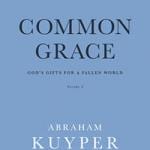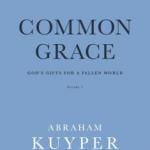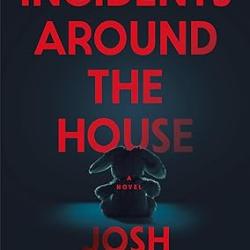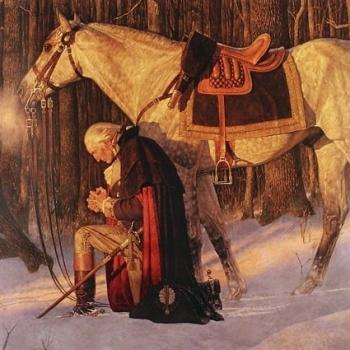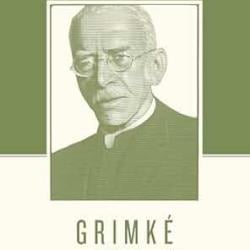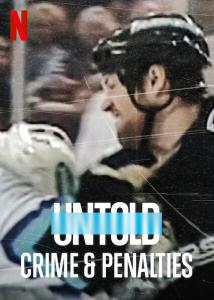
Despite growing up in a state that is on average almost three degrees colder than New Hampshire (and an average temperature roughly equal to that of Alaska), I don’t know much about hockey. There weren’t really enough of us in Wyoming to manage more than one winter sport, so basketball tended to win out. So for those who claim to enjoy hockey just for the fighting, I don’t get why they don’t just watch boxing instead and cut out the skating. For that matter, I’m unclear on exactly why there’s so much fighting in hockey in the first place. More on that in a minute. That there is fighting in hockey is of course a cultural given. And that some people might try to capitalize on the fighting should also be a given. And that Netflix would try to capitalize on both at once, well, that brings us to the latest episode of their series Untold (reviews of others in the series available here).
In Untold: Crime and Penalties we meet Jimmy Galante and his son A.J. Though he loved playing hockey, A.J. was knocked out of the sport and into a depression by a high school injury. To help out his son both with his depression and so that A.J. could still be involved in the hockey world–as well as getting him a bit of real-world experience before he graduated from high school–Jimmy bought the 17-year-old A.J. a minor league hockey team: the Danbury Trashers. Did I mention that Jimmy Galante was also the owner of a large sanitation service? And that he was high up in organized crime? Or that somehow he was entirely right that owning a hockey team would boost A.J. out of his depression, and that A.J. was in fact ready to own and operate a minor league hockey team? At least, he was ready if the fact that they [spoiler alert] almost went on to win the championship is any measure…
On being given control of the team, A.J. set about putting together a scrappy underdog organization that quickly became beloved by the people of Danbury and very nearly won the whole thing their first year on the ice. That is one version of the story, and it is an accurate one. The other version is that Jimmy threw money at players (in violation of league salary rules) until they agreed to move to Danbury, while A.J. told them to go out on the ice and beat the crap out of the other team at every opportunity. Which they proceeded to do, much to the horror of the league’s Commissioner. Though they were apparently also good at the game (given that they made it to the championship), they were known primarily for fighting and violence. One of the few eye-rolling moments in the documentary comes when a former Trasher expresses his outrage over a cheap shot from another team that resulted in his leg being broken. While no doubt the hit that broke his leg was a cheap shot, the Trasher player was apparently unaware of the irony that he found it despicable that someone else would stoop so low when he had been spending the whole season so far going after other teams with equal aggression (though to be fair, the documentary made no mention of him giving anyone on other teams career-ending injuries, so maybe he was more tactical with his violence?).
Much to the dismay of the Trashers fans (who were legion by the end of the season), Jimmy Galante’s arrest and prison sentence resulted in the dissolution of the Danbury hockey team, leaving behind only the abiding love of the fans and this documentary.
Although the tone of Crime & Penalties is much lighter than the other episodes so far in the series, the hyper-focus continues. We are given this entire story through the filter of violence on the ice and cash flow off it. Very little actual hockey playing is on display–nor is there much in the way of trash pickup, mob relations, or criminal justice. Still, this episode is excellent–I think the best of them so far. I’m willing to say if you don’t watch anything else, you should watch this selection from Untold.
I said I’d get back to the question of violence in hockey, because I think it’s good opportunity for some public reflection on the nature and role of violence in sports. The question I can’t answer has to do with the relationship between violence and hockey specifically. Just why does this sport lead, at least in the popular mind, inevitably to violence. At one point in the show the hockey Commissioner points out that the average hockey game has two fights in it (while the outrageous Trashers were having eight or nine fights per game). I struggle to think of any other team sport with those kinds of numbers. Not that there is no fighting elsewhere (there are hundreds of football, basketball, and baseball players–of course fists are going to fly sometimes), but how many other sports have two fights between players every game? Again, I don’t know hockey.
More to the point, why is some violence okay in hockey (the ~two fights per game) and what the Trashers do (intentionally starting multiple fights per game) not okay? And to be clear: it is not okay. Although the Trashers are clearly presented as the anti-heroes of the documentary (the ‘bad guys’ that we all love to cheer for), and they certainly do make for an entertaining documentary (seriously: go watch this), it still felt wrong when they were told to go out and start a fight the very first time they hit the ice in their first game. Why is this?
I think the answer has to do with the way we interact with the world. We live in a fallen world, where violence is an expected part of at least some aspects of human existence. Maybe it’s far from most of us in the contemporary West most of the time, but we get that it happens. There are times when throwing a punch is not only acceptable, it’s the right thing to do. So when a fight breaks out in the rink, maybe it’s acceptable from our perspective as fans because something had happened that makes it okay in this case–just as there are circumstances in life when fighting is okay. (And again: why is it okay in hockey and not in other sports? no idea…) But to have someone intentionally start the fight without that appropriate setting, that feels like something has gone askew. Instead of the fight coming at an organically appropriate moment in the game, an element of chaos is injected into the game that degrades the players, the fans, and the institution as a whole. If I tell my students that they can defend themselves if they are attacked, we might regret the necessity of the circumstances of a fallen world but we wouldn’t be outraged should they get into a fight. But if I tell them to go out and start punching strangers in the street, even if the result is the same fight that would have otherwise happened, both I and my students have actively chipped away at something important.
And all of that is obviously ignoring the whole ‘mob’ angle (which the episode downplayed in any case). Presumably had the FBI taken the time to go into detail about all the things Galante had been charged with, the sympathy with which Crime & Penalties portrays him might not have gone over so well. But they didn’t go into that detail, and as a result this is the strongest episode in the series so far, and I’m happy to say that if you only watch one you should watch this one.
Dr. Coyle Neal is co-host of the City of Man Podcast and an Associate Professor of Political Science at Southwest Baptist University in Bolivar, MO


